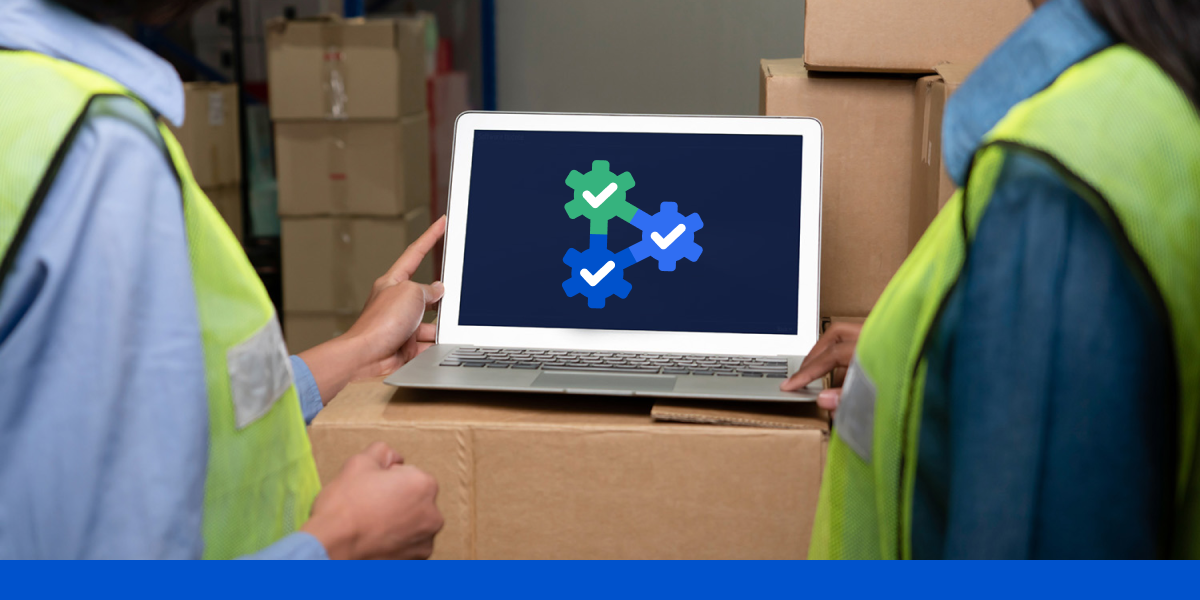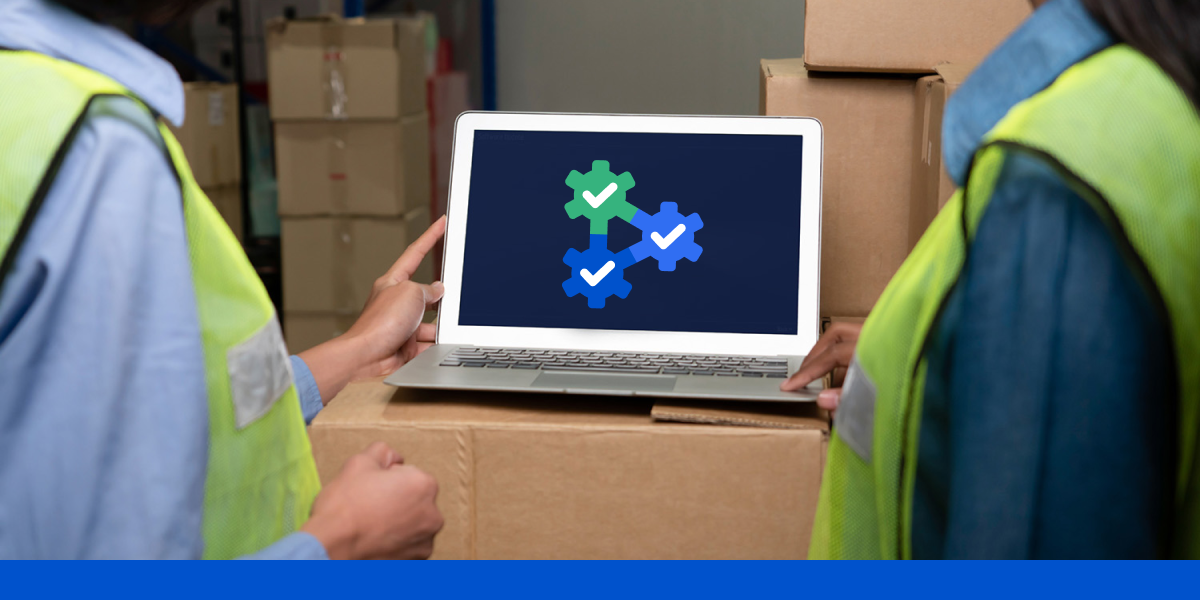There’s nothing more frustrating: A customer calls asking for an update or making a change to their order. You want to help them quickly and easily, but you can’t access the order information in the tool you use. You ping somebody, and they redirect you to a team that uses a different tool, but the information they send isn’t right either. By the time you’ve figured out the answer to the customer’s question, you’re both frustrated and dissatisfied.

When you have the right set of solutions, you’re able to grow your capabilities and do your job more effectively—but getting the right mix of technologies is no mean feat. When you have redundant or disconnected solutions, you can wind up making it difficult for the right people to find the data they need when they need it to do their jobs effectively. By the same token, when delivery and distribution planning and execution processes start to require too many solutions, day-to-day operations can become so complex that they virtually grind to a halt.
No one wants to be in a position where making a simple change to a particular delivery route is so complex that it requires a herculean effort. At the same time, there’s no sense in pretending that complex operations like food distribution are simple enough to be handled by a single solution. So what’s the right balance? How do businesses build the right B2B delivery tech stack for their use case?
B2B Delivery Technology Elements
Depending on what, exactly, your delivery operations look like, there’s a handful of different solution types that you might be working with:
- Transportation management systems (TMS)
- Telematics
- Route accounting
- Route planning
- Enterprise resource planning (ERP)
- Warehouse management systems (WMS)
- Last mile delivery solutions
If you’re planning multi-day routes—or if you’re moving goods that require temperature monitoring—telematics is potentially non-negotiable. And virtually any delivery organization of a certain size will have an ERP system. But what about route accounting, TMS, last mile, and other solutions?
There’s no one-size-fits-all-answer here. And for most enterprises, the right answer is going to depend a lot on what your tech stack already looks like. Most businesses don’t have the luxury of starting from scratch—instead they need to find ways to consolidate existing technology to make their lives easier and streamline their solutions. More so than a matter of picking technology from the right categories, it’s a matter of adopting solutions that adhere to the right principles.
For instance, the ideal B2B tech stack is highly-connected and helps ensure that data and processes never wind up stuck in silos. To make that kind of connectivity a reality, you can start by prioritizing SaaS-native deployments. True cloud technology has the benefit of being effectively future-proof, since security and other updates are pushed out automatically and there’s no risk that your in-house IT staff lags behind on keeping the software up and running. This—plus the general best practices by which these solutions are generally architected—help to ensure that these solutions are interoperable with one another. Again, this goes a long way towards fighting silos and helping make new efficiencies more apparent.
By the same token, the solutions themselves need to be adaptable and capable of evolving. This isn’t just a matter of having the latest and greatest features and capabilities (though that can be important). Rather, it’s about putting your teams in a position to evolve their own processes as your business needs change. If your transportation network gets larger, you want to be able to adjust the way you plan and execute routes without changing out your technology. That means planning your technology deployments not just around the current processes you might have in place, but the processes you might develop to meet changing businesses needs. This isn’t something you’re going to find on a factsheet or a list of features—it’s something that comes from working with companies that are committed to helping B2B delivery organizations keep promises and grow their businesses.
Why Last Mile Technology Matters
Here, it’s worth stopping to point out that while there’s no one-size-fits-all approach to building out your B2B delivery, there is one type of solution that’s too frequently overlooked or minimized: last mile logistics solutions. Sure, everyone has a routing solution—but routing isn’t the entire battle when it comes to getting the right deliveries to the right customers at the right time. In fact, it’s only a small part of the process of making sure you can deliver to customers efficiently and at the right time.
What’s the difference between a routing solution and a last mile solution? We’re glad you asked:
- Routing software: This is pretty much what it sounds like—you upload orders and specify parameters and the software spits out routes. What happens to the routes from there is some other piece of software’s problem.
- Last mile software: By contrast, a real last mile solution encompasses planning, routing, and execution—including driver management and customer communications. Rather than shuttling back and forth between different solutions to plan, manage, and execute deliveries, you can generate weekly strategic plans, turn those strategic plans into routes, dispatch routes to drivers, communicate with customers, and track every delivery as it unfolds.
When you streamline all the processes that make up last mile logistics into a single solution, you turn them into one holistic process. Routes become responsive to your strategic planning and dispatching needs, and you get enough visibility and interoperability between planning and execution to become more responsive to disruptions in real time.
This isn’t a purely academic difference. When your routing solution is totally disconnected from your delivery tracking system, the simple act of adjusting a route based on a last minute delay or cancellation can be prohibitively difficult. Likewise, keeping customers notified of when to expect their deliveries requires a lot more manual effort when the ability to predict ETAs is siloed off from your customer communication capabilities.
Best of all, by combining all of these elements—planning, routing, dispatching, tracking, communication, reporting—into a single workflow, you decrease the number of touchpoints across your IT stack that need to be connected. This decreases the number of screens you need in order to create and carry out your delivery plans, and it helps you consolidate your IT more generally.
What to Look for in Enterprise Delivery Technology
When you treat last mile logistics as a single solution, you can speed up planning, improve execution, and ultimately reduce costs by uncovering new efficiencies. But not all last mile solutions are created equal—to really get value out of any new addition to your tech stack, you need to find something that’s fast, powerful, and easy to integrate into other solutions.
Here are a few key elements to look for:
- Scalability: solutions that are architected to scale up as needed without slowing down offer you more flexibility and adaptability.
- Processing power: for delivery processes to work holistically, you need to avoid delays at any given touchpoint—which means adopting technology that can solve problems quickly.
- Interoperability: you don’t just want the ability to share data easily between solutions (though that’s extremely important), you also want to be able to access one solution’s data within another solution if it’s relevant to the task at hand.
- Innovation: we’ve talked a lot about future-proofing your technology, and one way to prioritize that goal is to work with providers who have a track record of innovating and evolving their solutions to meet changing business needs.
If you can evaluate technology solutions with these in mind, you can effectively ensure that every update to your technology stack brings you closer to the next generation of delivery management. There may not be a single ideal solution for building out a B2B delivery technology stack, but making strategic choices along the way can help put you in the driver’s seat as your business and processes evolve.
